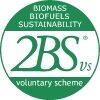Our services
Biogas
Sustainability certification for biogas and biomethane
To promote energy produced from renewable sources and thus facilitate the reduction of Greenhouse Gas (GHG) emissions in European countries, the European Commission published the Revised Renewable Energy Directive EU/2018/2001 (RED III) in 2024.
Now in its third version, this Directive outlines the rules for verifying compliance with sustainability and greenhouse gas (GHG) emission reduction criteria for products placed on the market. To access the bioenergy market in Europe, players must meet the RED requirements.

What does this mean for biogas producers?
Under RED III, biogas production sites with a capacity of 2 MW or more must, in accordance with transposition by the Member State, be certified and meet sustainability criteria and greenhouse gas emission reduction requirements.
The same obligation applies to installations with an average production rate of more than 200 m³ of methane equivalent per hour (measured at 0°C and 1 bar), calculated in proportion to the methane content when the biogas is a mixture of methane and other non-combustible gases.
Biogas plants with a capacity of 10 MW or more must comply with different GHG emission reduction criteria depending on when they are commissioned. The same applies to facilities with a capacity of less than 10 MW.
Installations with a capacity of less than 2 MW are not covered by the RED III requirements.
However, biogas and biomethane sustainability certification can help all players to bring their sustainable products to market.
2BSvs-biogas sustainability certification
We have developed the 2BSvs certification, based on the RED III Directive. This certification is applicable to all organizations in the production and distribution chain of biofuels, bioliquids and biogas, who want to sell their products in the European Union.
The 2BSvs – biogas certification system covers the entire chain: from biomass production, feedstock collection and waste and residues collection and treatment to the transformation and production of the finished product (biogas & biomethane), depending on its use (heat, electricity or transport).
2BS certification is valid for 5 years, provided that annual audits are undertaken. In short, we offer sustainability certification and work with certification bodies referenced and trained by our team to carry out the audits.
How do I get certified as a sustainable player?
Simply start by contacting our team.
Once you have signed a contract with our association and a recognized Certification Body, you can schedule the initial site audit.
Please note: preparation for the certification process can take up to 6 months, given the time required to recover site documentation and production data. However, once certified, 2BSvs certification is valid for 5 years, as long as follow-up audits are carried out annually.
To find out more about the sustainability criteria for certification, discover the documents to present at the audit, and better prepare yourself, discover our white paper on our certification of sustainability of biogas and biomethane.
And to help you along the way, we propose a number of certification tools. If you have any further questions about biogas and biomethane sustainability certification, our team will be happy to help!
Biogas sustainability certification recognized by the European Commission
The 2BSvs guideline complies with the Renewable Energy Directive (RED III).
Our sustainability certification is recognized by the European Commission, enabling products to be marketed under the “sustainable” label.
The 2BSvs certificate is equivalent to all Voluntary Schemes recognized by the European Commission.
The certificate also enables you to market your products in all European countries.
Documents for the 2BSvs-Biogas certification
Discover our services
Frequently Asked Questions
Facilities subject to the European carbon quota market must demonstrate the sustainability and greenhouse gas reduction, within the meaning of RED II, of their solid, gaseous or bioliquid biomass fuels in order to be able to count the emissions corresponding to the latter as 0 in the ETS emissions declarations.
It is important to note that this applies to all installations subject to the ETS market, even those below the 2 MW/20 MW threshold in terms of ‘biomass power’.
These entities can apply for certification according to the 2BSvs standard (STD-01 or STD-02, depending on their scope of activity).
The 2BS certification consists of three documents: the self-declaration, the sustainability declaration and the proof of sustainability.
The self-declaration contains information on compliance with the sustainability criteria and the type of methodology used to calculate greenhouse gas (GHG) emissions.
The sustainability declaration makes it possible to identify the material, its sustainability criteria and all activities related to greenhouse gas emissions throughout the chain.
The proof of sustainability provides essential information on the product’s sustainability criteria and the reduction of greenhouse gas emissions, in relation to its fossil reference.
Find here a template for each of these documents.
Depending on your status within the production chain, you will need to provide a self-declaration, a sustainability declaration and/or proof of sustainability.
There are three methods for calculating your GHG: use the RED II default values, use the NUTS2 values (values by region and by crop), or use your actual values.
The 2BSvs certificate allows the raw material to be marketed under the sustainable designation in all European countries.

